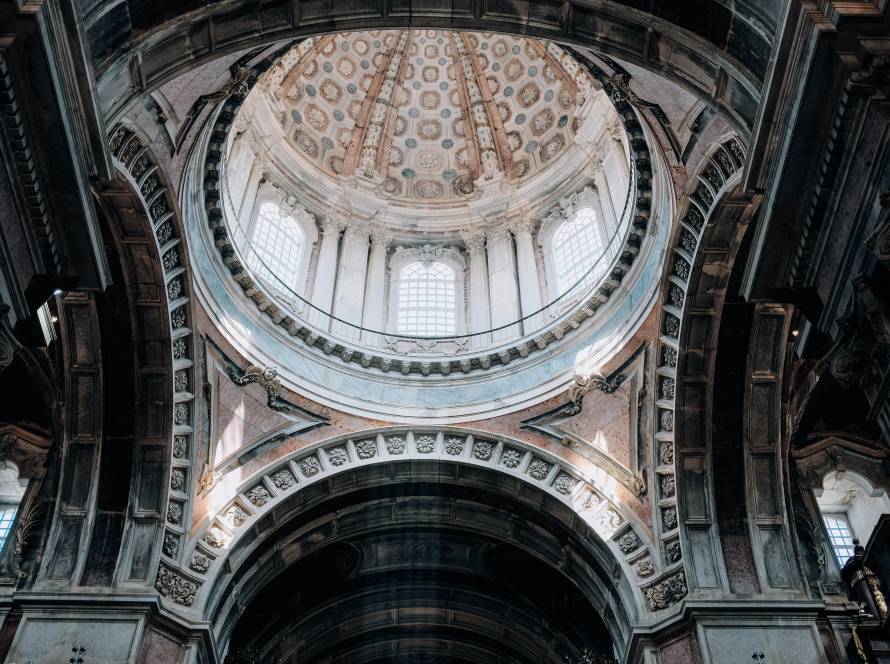Geodesic Domes: Captivating the Imagination and Defining Architectural Excellence Throughout History
Throughout history, domes have been a source of fascination, captivating the human imagination and serving as a symbol of architectural excellence.
Domes have enthralled and intrigued humans for millennia, from ancient civilizations to current architectural masterpieces. These extraordinary dome structures, with their beautiful curves and tremendous spans, have been employed for a variety of reasons, ranging from religious and cultural monuments to major architectural achievements. The history of dome construction is a tribute to human creativity, architectural proficiency, and aesthetic expression.
Image Source: Arabian Business
https://www.arabianbusiness.com/gallery/430837-gallery-your-guide-to-the-expo-2020-dubai-country-pavilions
History Of Geodesic Domes And Their Origin
Dome building may be traced back to ancient civilizations when it was done with a range of materials and techniques:
- One of the first known domes may be located in what is now modern-day Iraq, in ancient Mesopotamia. The Sumerians erected ziggurats, which were sacred buildings in the style of a tiered pyramid with a tiny dome or shrine at the summit.
- Domes attained unprecedented heights of architectural perfection under the ancient Roman Empire. With the invention of a new building material known as concrete, the Romans revolutionized dome construction. This discovery enabled them to build massive, self-supporting domes like the beautiful Pantheon in Rome. The Pantheon’s dome, with its oculus in the center, was completed in 126 AD and is the world’s biggest unreinforced concrete dome to this day.
- Dome building was transformed in the nineteenth century by advances in iron and steel manufacture. The use of these materials enabled the construction of bigger and more structurally sophisticated domes. The Crystal Palace in London, erected for the Great Exhibition of 1851, was a revolutionary in iron and glass construction. Its massive dome encased a wide display space and demonstrated the architectural capabilities of industrial materials.
- The invention of reinforced concrete in the early twentieth century broadened the possibilities for dome building even more. Architects such as Antoni Gaudi in Spain and Félix Candela in Mexico experimented with novel shapes and forms, pushing structural architecture to new heights. Gaudi’s landmark Sagrada Familia in Barcelona is comprised of a succession of hyperboloid domes that provide a distinct and organic design.
- Space exploration also affected dome architecture in the contemporary period. As civilization expanded beyond Earth, the necessity for buildings that could resist the harsh environment of space became clear. The geodesic dome, popularized by Buckminster Fuller, proved to be an appropriate option. Its lightweight, self-supporting construction made it suited for space habitats, such as the Biosphere 2 experiment in Arizona, which intended to establish a self-sustaining environment for scientific study.
- Furthermore, domes are still commonly used in religious and cultural structures nowadays. The Hagia Sophia in Istanbul, which was initially built as a Byzantine cathedral in the sixth century, has a massive dome that has served as architectural inspiration for centuries.
- The Lotus Temple in New Delhi, India, with its magnificent white marble lotus-shaped dome, became an iconic emblem of the Bahá’ Faith during the twentieth century.
- Dome architecture continues to excite architects and engineers with its aesthetic appeal, structural cleverness, and diversity. Modern technology such as computer-aided design (CAD) and digital fabrication processes are changing the way domes are planned and manufactured. These technologies make it possible to do exact computations, optimize structural elements, and create complicated designs that were previously impossible.
- Furthermore, the use of sustainable principles in dome building has been a major priority. Green roofs, solar panels, rainwater harvesting systems, and effective insulation techniques are being included in dome designs to make them more ecologically friendly and energy-efficient.
- The history of dome construction is a tribute to human ingenuity and our capacity to push the boundaries of design. Domes have stood as architectural symbols that blend purpose, beauty, and cultural value, from ancient wonders to current marvels. As technology and sustainability continue to influence the industry, we can only picture the stunning domes that will adorn our skylines in the future.
The Magnificent Domes and the Islamic Golden Age.
Dome construction reached unprecedented heights of intricacy during the Islamic Golden Age, which lasted from the eighth through the fourteenth century. With amazing accuracy and beauty, Islamic builders and engineers integrated domes into their religious and cultural constructions. The Dome of the Rock in Jerusalem, erected in 691 AD, is one of the most recognizable examples. Its golden dome is a symbol of the city and a tribute to Islamic architectural excellence. Also, Gain extensive insights into the world of domes by visiting: Glass Domes On Mars
Image Source: Wikipedia
https://en.wikipedia.org/wiki/Dome_of_the_Rock
Rediscovering the Geodesic Domes during the Renaissance
- Following the fall of the Roman Empire, there was a hiatus in dome construction throughout Europe. However, there was a rebirth of interest in classical architecture during the Renaissance period, which led to the rediscovery of dome construction techniques. Architects such as Filippo Brunelleschi, inspired by the ancient Roman constructions, pushed the bounds of dome construction once again. Brunelleschi’s masterwork, the dome of the Florence Cathedral (Duomo di Firenze), finished in 1436, is regarded as an engineering wonder. This dome, built with an unusual herringbone pattern of bricks, is still the world’s biggest brick dome. Brunelleschi’s dome became a symbol of Florence and a testimony to the Renaissance’s architectural triumphs.
- The St. Peter’s Basilica in Vatican City is a spectacular example of a Renaissance dome building. Its dome, designed by Michelangelo and finished in 1590, is a work of engineering and beauty. With a height of 136 meters (446 feet) and a diameter of 42 meters (138 feet), it is still the world’s highest dome. The design of the dome influenced the construction of many other churches and civic buildings throughout Europe.
- Moving to a different corner of the world, the Taj Mahal in Agra, India, exemplifies the grace and majesty of Islamic dome building. This UNESCO World Heritage Site, which was completed in 1653, includes a central dome encircled by lesser domes and minarets. The white marble domes, meticulously decorated with artistic patterns and calligraphy, provide a harmonious and ethereal environment.
- The United States Capitol Building in Washington, D.C. underwent major extension and refurbishment in the twentieth century, including the erection of the distinctive cast-iron dome. The dome, designed by Thomas U. Walter and finished in 1863, stands as a symbol of American democracy. Its imposing size, towering 88 meters (288 feet) tall, is enhanced by the exquisite paintings that cover its interior.
- The Sydney Opera House in Australia was built by Danish architect Jrn Utzon and contains a sequence of sail-like shells that merge to produce a spectacular complex of performance rooms. The unique roofs of the opera house, completed in 1973, are regarded as one of the most identifiable architectural icons in the world.
- The Dubai Expo 2020 pavilion, dubbed “Al Wasl,” includes an eye-catching dome structure inspired by the shape of a historic Arabian tent. This geodesic dome exemplifies how technology, sustainability, and cultural elements are integrated into modern dome buildings.
- In the future, the field of dome construction will continue to evolve. Advances in computational design, digital manufacturing, and sustainable materials are opening up new avenues for architectural expression. Architects and engineers are investigating biomimicry, pulling inspiration from natural shapes and structures, to build unique dome designs that flawlessly blend beauty and usefulness.
- The history of dome construction is a fascinating trip through time, displaying humanity’s creativity and creative spirit. Domes continue to capture our imagination and inspire wonder, from ancient civilizations to current architectural marvels. As technology and architectural methods improve, we may expect even more stunning and inventive domes to transform the skylines of our cities and become iconic emblems of human achievement. Also, Delve into the topic of geodesic domes further by visiting: Geodesic domes, for additional reading.
Geodesic Domes of the Modern Era: Modern Marvels.
Dome construction continued throughout the twentieth and twenty-first centuries, with architects experimenting with new materials, technology, and architectural possibilities. Larger and more adventurous domes might now be built due to modern engineering advances. Buckminster Fuller pioneered the geodesic dome, which became a symbol of innovation and sustainability. The Eden Project in Cornwall, United Kingdom, is a famous example of a contemporary dome. The project, which was completed in 2001, consists of a series of enormous biomes with domed roofs that house varied ecosystems from across the world. These eye-catching domes, built with lightweight materials and cutting-edge technical processes, serve as a showcase for sustainable building and environmental education.
Image Source: Wikipedia
domes -Project Eden
The Geodesic Domes Construction Industry’s Future.
Dome building is evolving as we get deeper into the twenty-first century. To push the frontiers of what is possible, architects and engineers are adopting cutting-edge technologies like parametric design and 3D printing. These breakthroughs give up new options for artistic expression and allow for the fabrication of previously inconceivable domes. Furthermore, the emphasis on sustainability and environmentally friendly design is expected to impact the future of dome building. Energy-efficient materials, renewable energy integration, and green building practices are becoming more important factors in architectural design.
In conclusion, the history of dome construction is a monument to human imagination, architectural proficiency, and cultural expression. Domes have stood as icons of architectural brilliance and human achievement throughout history, from ancient ziggurats and the Roman Pantheon to the spectacular domes of the Islamic Golden Age and modern architectural wonders. Looking forward, the growth of dome building promises to grab our imagination and leave an unforgettable impact on the architectural world.



